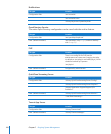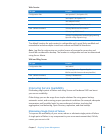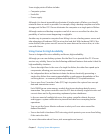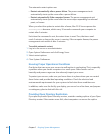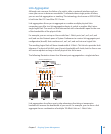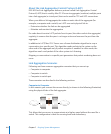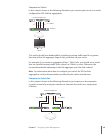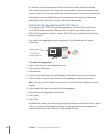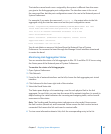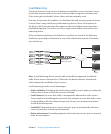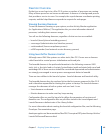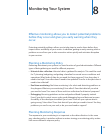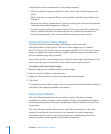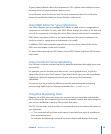
For example, you can connect two links to the master switch and the remaining
links to the backup switch. As long as the master switch is active, the backup switch
remains inactive. If the master switch fails, the backup switch takes over transparently.
Although this scenario adds redundancy that protects the server from becoming
unavailable if the switch fails, it results in decreased bandwidth.
Setting Up Link Aggregation in Mac OS X Server
To set up your Mac OS X Server for link aggregation, you need a Mac with two or
more IEEE 802.3ad-compliant Ethernet ports. In addition, you need at least one
IEEE 802.3ad-compliant switch or another Mac OS X Server computer with the same
number of ports.
You create a link aggregate on your computer in the Network pane of System
Preferences.
Installer application
or
installer tool in
Terminal application
To create a link aggregate:
1 Log in to the server as an administrative user.
2 Open System Preferences.
3 Click Network.
4 Click the Gear button and choose Manage Virtual Interfaces in the pop-up menu.
5 Click the Add (+) button, and select New Link Aggregate in the pop-up menu.
Note: You only see this option if you have two or more Ethernet interfaces on your
system.
6 In the Name eld, enter the name of the link aggregate.
7 Select the ports to aggregate from the list.
8 Click Create.
9 Click Done.
By default the system gives the link aggregate the interface name bond<num>, where
<num> is a number indicating precedence. For example, the rst link aggregate is
named bond0, the second is bond1, and the third is bond2.
166 Chapter 7 Ongoing System Management



